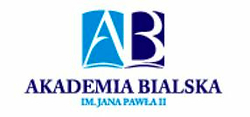Health Prob Civil.
1. Chen H, Selix N, Nosek M. Perinatal anxiety and depression during Covid-19. J Nurse Pract. 2021; 17(1): 26-31. https://doi.org/10.1016/j.nurpra.2020.09.014
2.
Wahyuni S, Pandin MGR. Dyad model as a caring innovation in high risk pregnancy. The 3rd Joint International Conference. 2021;3(1): 1-16. https://doi.org/10.20944/preprints202104.0178.v1
3.
Nodoushan RJ, Alimoradi H, Nazari M. Spiritual health and stress in pregnant women during the Covid-19 pandemic. SN Comprehensive Clinical Medicine. 2020; 2: 2528-2534. https://doi.org/10.1007/s42399-020-00582-9
4.
Henriksen L, Borgen A, Rislokken J, Lukasse M. Fear of birth: prevalence, counselling and method of birth at five obstetrical units in Norway. Woman and Birth. 2020; 33(1): 97-104. https://doi.org/10.1016/j.wombi.2018.11.008
5.
Duyan V, Gül Kapısız S, Yakut Hİ. [Turkish adaptation study of Prenatal Attachment Inventory on a group of pregnant women]. Jinekoloji-Obstetrik ve Neonatoloji Tıp Dergisi. 2013; 10(39): 1609-1614 (in Turkish).
6.
Palma E, Armijo I, Cifuentes J, Ambiado S, Rochet P, Díaz B, et al. Hospitalisation in high-risk pregnancy patients: is prenatal attachment affected?. Journal of Reproductive and Infant Psychology. 2021; 39(1): 30-42. https://doi.org/10.1080/02646838.2020.1740661
7.
Gürol A, Ejder Alpay S, Sönmez T. Effects of the labour fear on the prenatal attachment and determination of the affecting factors. Arch Health Sci Res. 2020; 7(2): 137-45. https://doi.org/10.5152/ArcHealthSciRes.2020.460568
8.
Hazar HU, Akça EU. Prenatal breastfeeding self-efficacy scale: validity and reliability study. Turk Pediatri Ars. 2018; 53(4): 222-30. https://doi.org/10.5152/TurkPediatriArs.2018.18114
9.
Haines H, Pallant JF, Karlström A, Hildingsson I. Cross-cultural comparison of levels of childbirth-related fear in an Australian and Swedish sample. Midwifery. 2011; 27(4): 560-567. https://doi.org/10.1016/j.midw.2010.05.004
10.
Serçekuş P, Vardar O, Özkan S. Fear of childbirth among pregnant women and their partners in Turkey. Sexual & Reproductive Healthcare. 2020; 24(100501): 1-6. https://doi.org/10.1016/j.srhc.2020.100501
11.
Yılmaz S, Kızılkaya Beji N. [Adaptation of Prenatal Attachment Inventory to Turkish: reliability and validity study]. Anadolu Hemşirelik ve Sağlık Bilimleri Dergisi. 2013; 16(2): 103-109 (in Turkish).
12.
Kreyberg I, Nordhagen LS, Bains KES, Alexander J, Becher R, Carlsen KH, et al. An update on prevalence and risk of snus and nicotine replacement therapy during pregnancy and breastfeeding. Acta Paediatr. 2019; 108(7): 1215-1221. https://doi.org/10.1111/apa.14737
13.
Zengin H, Tiryaki Ö, Yalnızoğlu Çaka S, Çınar N. [is there a relationship between the anxiety levels of the pregnants in natal and postnatal periods and their Body Mass Index?]. Dokuz Eylül Üniversitesi Hemşirelik Fakültesi Elektronik Dergisi. 2021; 14(1): 48-54 (in Turkish). https://doi.org/10.46483/deuhfed.620281
14.
Muniz CL, Paz-Zulueta M, Rio ECD, Sota SM, de Adana MS, Perez MM, et al. Impact of maternal smoking on the onset of breastfeeding versus formula feeding: a cross-sectional study. Int J Environ Res Public Health. 2019; 16(24): 4888. https://doi.org/10.3390/ijerph16244888
15.
Diamanti A, Papadakis S, Schoretsaniti S, Rovina N, Vivilaki V, Gratziou C, et al. Smoking cessation in pregnancy: an update for maternity care practitioners. Tob Induc Dis. 2019; 17: 57. https://doi.org/10.18332/tid/109906
16.
Ozcan H, Ustundag MF, Yilmaz M, Aydinoglu U, Ersoy AO, Yapar Eyi EG. The relationships between prenatal attachment, basic personality traits, styles of coping with stress, depression, and anxiety, and marital adjustment among women in the third trimester of pregnancy. Eurasian J Med. 2019; 51(3): 232-236. https://doi.org/10.5152/eurasianjmed.2019.15302
17.
Yalniz Dilcen H, Akin B, Türkmen H. The relationship of prenatal attachment level to traumatic childbirth perception and posttraumatic stress in pregnancy. Perspect Psychiatr Care. 2022; 58(1): 221-228. https://doi.org/10.1111/ppc.12875
18.
Konukoğlu T, Pasinlioğlu T. [Breastfeeding self-efficacy in pregnant women and determination of the factors affecting it]. Ebelik ve Sağlık Bilimleri Dergisi. 2021; 4(1): 12-22 (in Turkish).
19.
Pehlivanoğlu Çelik F, Er Güneri S. The relationship between adaptation to pregnancy and prenatal attachment in high-risk pregnancies. Medicina Academica Mostariensia. 2020; 8(1-2): 170-177.
20.
Corby K, Kane D, Dayus D. Investigating predictors of prenatal breastfeeding self-efficacy. Can J Nurs Res. 2021; 53(11): 56-63. https://doi.org/10.1177/0844562119888363
21.
Arslantaş H, Çoban A, Dereboy F, Sarı E, Şahbaz M, Kurnaz D. [Factors effecting delivery fear in last trimester pregnant women and its relationship with postpartum depression and maternal attachment]. Cukurova Medical Journal. 2020; 45(1): 239-250 (in Turkish). https://doi.org/10.17826/cumj.647253
22.
Sade G, Ejder Apay S, Tedik S, Mucuk Ö, Ağapınar Şahin S. [Effect of perceived fear of childbirth on prenatal attachment]. JHS. 2020; 29(3): 180-185 (in Turkish). https://doi.org/10.34108/eujhs.688222
23.
Coşkuner Potur D, Doğan Merih Y, Demirci N. [Evaluation of factors affecting prenatal attachment in primiparous and mulitpar pregnant women]. JAREN. 2020; 6(1): 132-40 (in Turkish).
24.
Çiçek Ö, Mete S. [A common problem: fear of childbirth]. Dokuz Eylül Üniversitesi Hemşirelik Fakültesi Elektronik Dergisi. 2015; 8(4): 263-268 (in Turkish).
25.
Kirmizigül İnan E, Şahin S, Tuncay Yilmaz S, Şahin D. Determination of fear of childbirth, breastfeeding self-efficacy and breastfeeding success in risky pregnants. Sağlık Akademisi Kastamonu. 2022; 7(3): 410-425. https://doi.org/10.25279/sak.692656
26.
Mutlu C, Yorbık Ö, Tanju İA, Çelikel F, Sezer RG. [The relationship between prenatal, intrapartum and postnatal factors and maternal attachment]. Anadolu Psikiyatri Dergisi. 2015; 16(6): 442-450 (in Turkish).
27.
Kesebir S, Kavzoğlu S, Üstündağ MF. [Attachment and psychopathology]. Psikiyatride Güncel Yaklaşımlar. 2001; 3(2): 321-342 (in Turkish).
28.
Pellerone M, Micciche S. Prenatal attachment and anxiety: women who decide to try ın vitro fertilization and women who procreate naturally. Psycology Research. 2014; 4(6): 419-427. https://doi.org/10.17265/2159-5542/2014.06.002
29.
Tatarlar A, Tokat MA. [The effect of birth fear on lactation, infant sucking ability and first breastfeeding results]. TAF Preventive Medicine Bulletin. 2016; 15(2): 83-91. https://doi.org/10.5455/pmb.1-1435819087
30.
Odabaşı E. Evaluation of pregnants' prenatal attachment and breastfeeding-self-efficacy perceptions. [Unpublished Master’s Thesis]. Erzurum: Atatürk University; 2018.
31.
Tokat MA, Elmas S, Yeyğel, Ç. [Investigation of the effect of gestational diabetes on breastfeeding outcomes and breastfeeding self-efficacy perception]. Dokuz Eylül Üniversitesi Hemşirelik Fakültesi Elektronik Dergisi. 2017; 10(4): 193-200 (in Turkish).
Copyright: © 2025 Pope John Paul II State School of Higher Education in Biała Podlaska. This is an Open Access article distributed under the terms of the Creative Commons Attribution-NonCommercial-ShareAlike 4.0 International (CC BY-NC-SA 4.0) License (http://creativecommons.org/licenses/by-nc-sa/4.0/), allowing third parties to copy and redistribute the material in any medium or format and to remix, transform, and build upon the material, provided the original work is properly cited and states its license.








